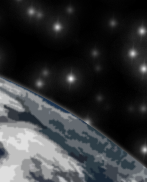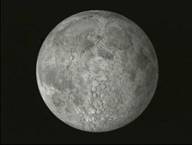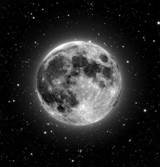 |
||
HomeSolar system UniverseAstronomy historyAstronomical distances and sizes |
||
The moon |
||
|
The Moon (Luna in Latin) is the only one natural satellite of Earth, reaching a distance of approximately 384,405 km of our planet, just over 1-second light.
Proportionally is the largest natural satellite in our Solar System. Its mass is so significant in relation to the mass of Earth that the axis of rotation of the Earth-Moon system is far from the central axis of rotation of the Earth. Some astronomers use this argument to say that we live in one of the components of a double planet, because to be a double planetary system, its axis of rotation is required to be out of the two bodies. In any event, the presence of the Moon acts stabilizing the rotation of the Earth. |
||
The Wonderful World of Astronomy - ThinkQuest |
||
|
|
|
|


